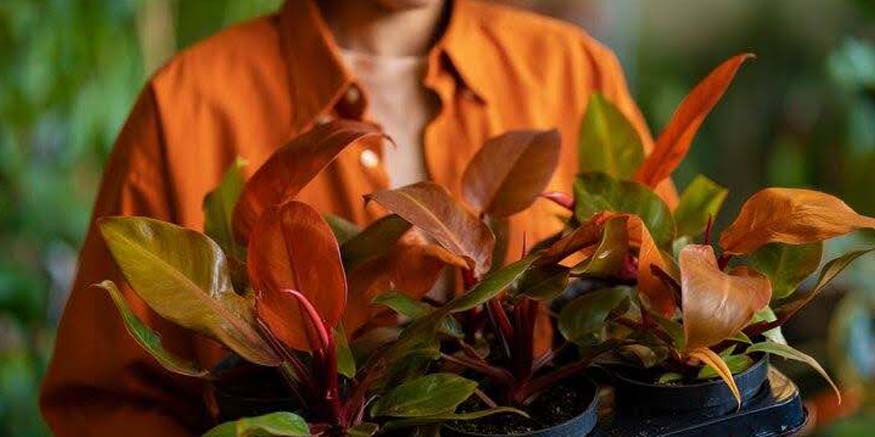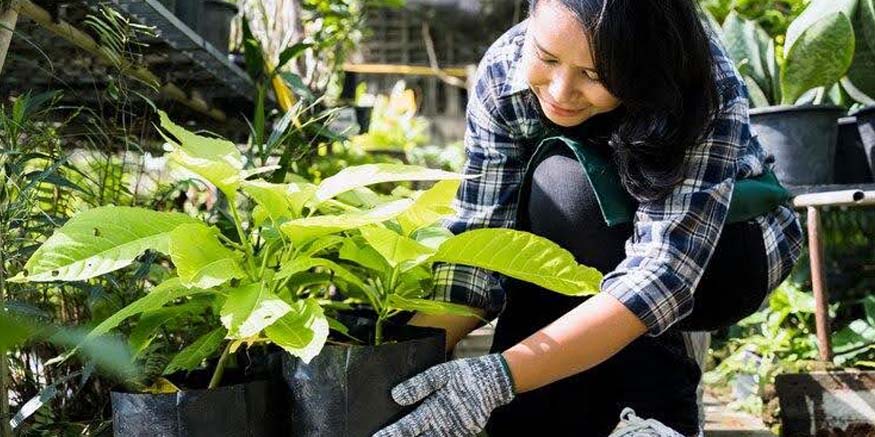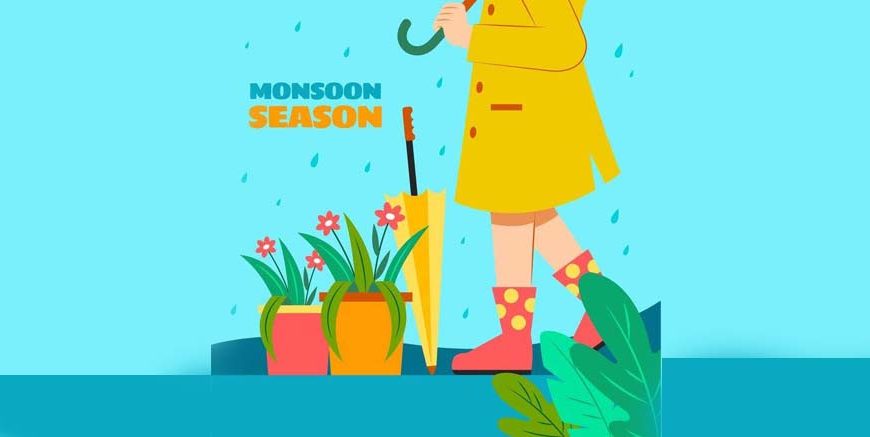As with any season, plant lovers feel certain emotions when the rainy season begins but there will always be problems encountered. Though it brings delicate rains to the earth as well as provides necessary elements for colorful plants to grow and quench the green thirst of earth, it also brings extra humidity and moisture which attracts the fungus, insects, and diseases germs too much. When taking care of an outdoor garden or having an indoor plant collection, it is imperative to adjust to the new dynamics of a wet and humid climate to help your plants and your friends thrive.
In this Latest post, let us discuss ten best practices important in taking good care of plants during this rainy season. Everything starting from establishing the correct method of draining the water to proper usage of pest and disease control, we will equip you with all the need-to-know practical considerations to ensure your plants are healthy and can perform to the optimum.
The plant or shrub requires the correct ratio of wetness and ventilation; SPL can build up fungus when too wet, and not enough water drainage will bring root rot and other adverse lifestyles. Now turn to essential practices such as pruning, or giving your plants a haircut, and offering them with shades or structures for protection from weather conditions.
Furthermore, we will explore some distinct features of deciduous indoor plants before the blooming period, such as the level of humidity for watering, watering frequency, and soil state. When you are aware of the difficulties the rainy season brings, you will be prepared on how to properly care for your plants to make the environment more conducive for growth.
Table Of Content:
- Plant Care in Rainy Season
- Plant Care Tips
- How To Take Care Of Plants
- Taking Care Of Plants
- How To Take Care Of Indoor Plants

Plant Care in Rainy Season:
What makes the rainy season good for plant lovers can also make it bad and what makes it bad can also be good. On the one hand, moisture makes plants grow faster and bigger, on the other hand,’ due to the increased humidity in the air and in the soil, fungi, pests, and diseases also grow rapidly. Nevertheless, using proper plant care techniques, you can speed up the recovery and guarantee that your beloved plants will not just live but develop during the rainy and humid season. In this comprehensive guide, we’ll explore ten essential tips to help you navigate the challenges and make the most of the rainy season for your plants.
Plant Care Tips:
- Proper Drainage:
- Pruning and Grooming:
- Mulching:
By far the one most important aspect that ought to be addressed and properly managed during the rainy season is drainage. This is bad for your plants as it means the roots decay due to dampness in the soil. Before you go out to buy new plants or a new potting mix, look carefully at your garden beds, pots and various mixes, and adjust those features that caused poor drainage. Organic matter tends to rot on or near your garden beds, it is advisable to elevate your containers or place a layer of gravel /rocks at the base to ensure adequate water drainage.
When the plants are growing, and it is the rainy season, another task of pruning and trimming the plants becomes important. Most importantly, prune off conspicuous branches that have grown large and dense and any branch with signs of disease or rot to allow air circulation, which discourages the outbreak of fungi. This practice also contributes to the overall aesthetic designs of the plants continually looking tidy as the season goes by.
One of the many benefits that can be gained through the use of mulching is that it aids in controlling the temperature, water content in the soil and weed germination. While using organic material such as bark chips, shredded leaves or straw, apply it a 2-3 inch layer around the plants mostly during the rainy season. This protective covering will assist in the following ways; For instance, it will act as a barrier to soil erosion, thereby ensuring the roots of the crops are cool and moist at the same time to promote efficient drainage of any excess water.

How To Take Care Of Plants:
- Pest and Disease Management:
- Fertilization:
Weather factors that prevail during the rainy season include warm temperature and high humidity which highly favor prevalence of pests and diseases. Make it a habit to check your plants for insect or disease presence and treat for these promptly if needed. Use natural or safer pest control methods instead of pesticides like neem oil or insecticidal soap to shield your plants from the unpleasant consequences.
Since most plants tend to grow and thrive in well-fertilized soil during this time due to the availability of moisture and nutrients, some may, however, be in need of a slight push. Age well-balanced water-soluble fertilizer and use it in the manner indicated in the pack’s instruction. The use of fertilizers should be done in moderation to ensure that the plants do not become overly grown because they will easily be attacked by pests and diseases.
Taking Care Of Plants:
- Humidity Management:
- Shelter and Protection:
Increased humidity during the rainy season is also capable of producing a suitable environment for the growth of bacteria fungi, and thus causing diseases. To prevent this, encourage air movement around your plants by removing excess foliage that is crowded around certain parts of the plant and using oscillators or dehumidifiers for inside plants. Also, water your plants in a shady area and early in the morning, maybe before mid-day, this helps the foliage to dry out especially during the evening thus minimizing the development of fungal diseases.
Heavy rains and strong winds can be detrimental to your plants, particularly delicate varieties or those with large, fragile blooms. Consider providing temporary shelter or support for your plants during severe weather conditions. This can include setting up a temporary greenhouse, using plant cages or stakes, or tying back branches to prevent damage.

How To Take Care Of Indoor Plants:
- Indoor Plant Care:
- Soil Health:
- Monitoring and Adjustment:
While potted plants which are grown in the exteriors have to bear the brunt of the rainy season head on, the houseplants do not escape the problems of the rainy season entirely. The other parameter to keenly look at is the relative humidity; one can use a humidifier or place trays filled with water beside the plants. Moreover, the amount of water given to the indoor plants should also be checked since they may consume less water unlike those planted in the exterior part due to low evaporation rates.
Soil conditions should always be kept healthy in order to support the health of plants out there in the field. Many people get trapped by something I call soil compaction during the rainy season, ensure you avoid this by all means possible. Till the soil to incorporate organic matter like composts, or aged manure if the soil has poor drainage and lacks the nutrients needed by your plants.
Whatever may be the type of garden or the plant collection, it is exceptional, thus practicing what is effective in one garden/ garden collection may not be effective in the other. To the plants, I would suggest that proper tracking of the plants during the rainy season and control measures should be undertaken when necessary. Observe how their profile changes, the shade of the foliage, and their well-being; it will take some time and be ready to modify the practices for their care. Water your plants and plan new watering techniques as well as other aspects of plant care like feeding and pest control at regular intervals in order to avoid forgetting some crucial details when it comes to looking after your plants.
Regardless of the level of experience of the reader, this guide will be a sure shot hit that will equip any gardener with all it takes to face the rainy season and what is required so as to cultivate a beautiful green shade. Accept and be excited about the difficulties and the possibilities this green colored month offers to your plants as they grow brilliantly in your hand.
When following these ten tips of plant caring during the rainy season, it will be easier to overcome hitches and leverage on the factors associated with the rainy season, which is a time of economic abundance characterized by growth of plants. However, do not forget that patience, observation, and the readiness to make necessary changes are the main factors that create a healthy environment for plants in a garden or home. Do not look at the rainy season as a period to fear but rather as a chance to cultivate your vegetative friends and enjoy them growing and developing under your supervision.
You May Also Like These, Plants that attract butterflies
For more such interesting blogs, Visit EuroKids
















